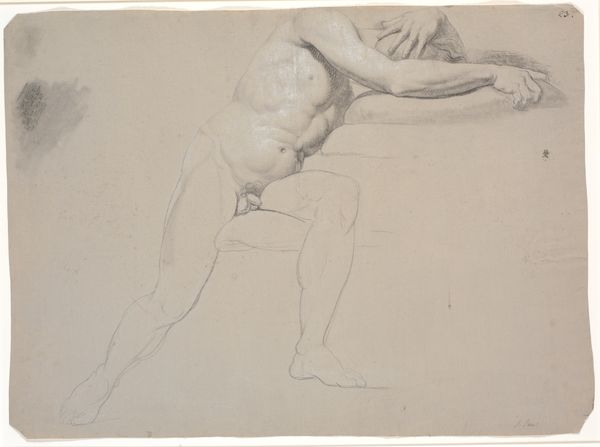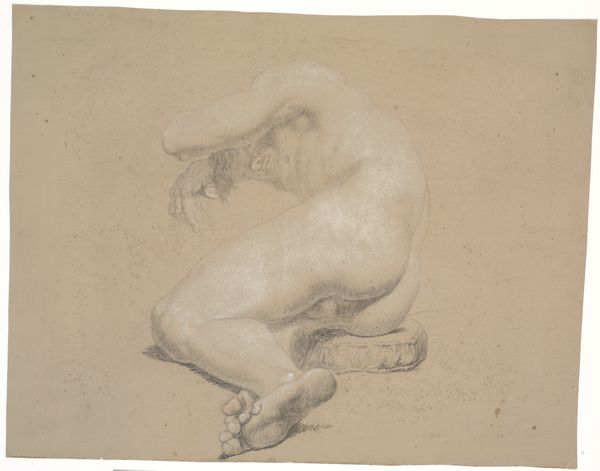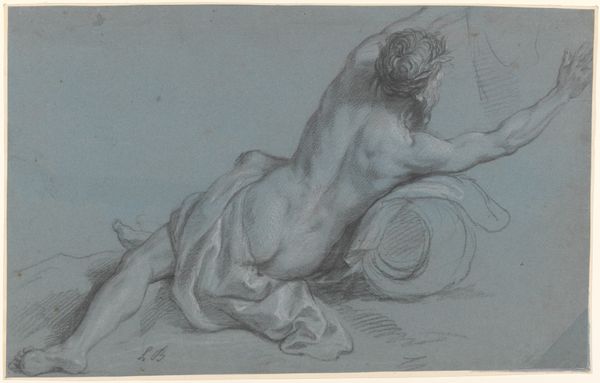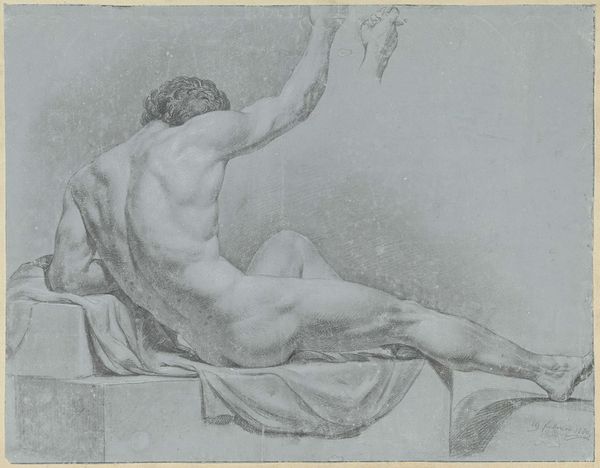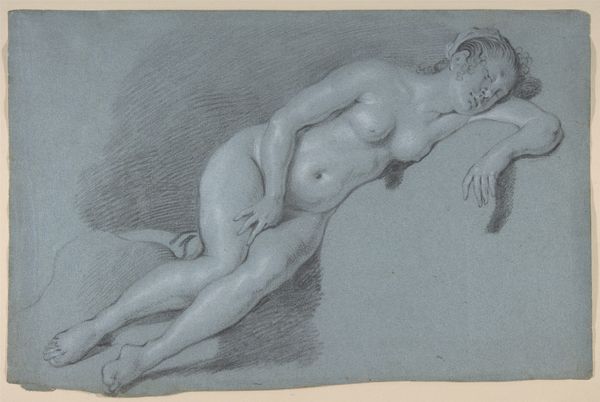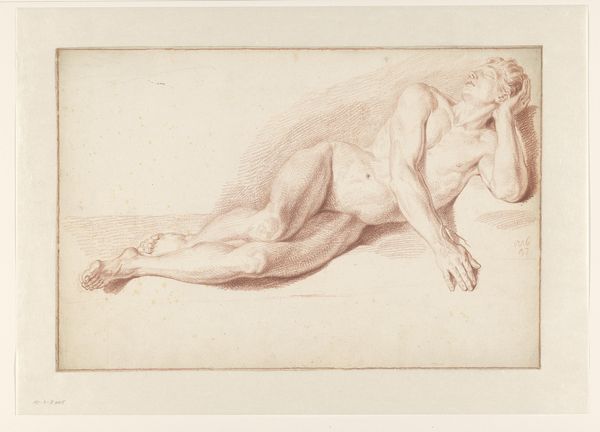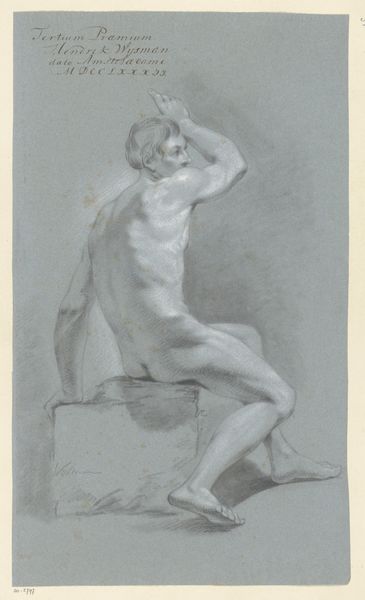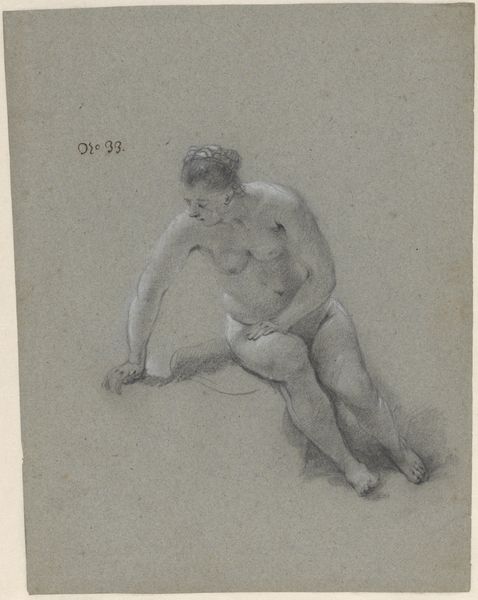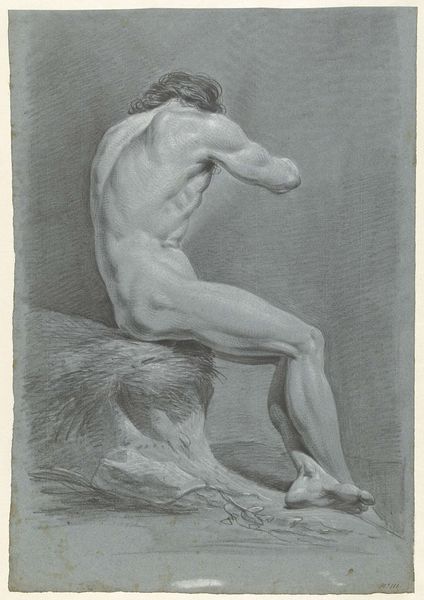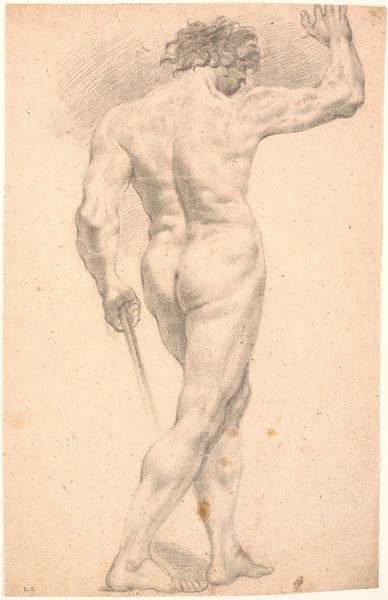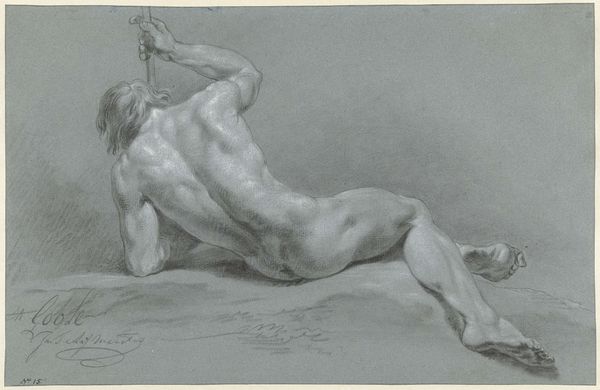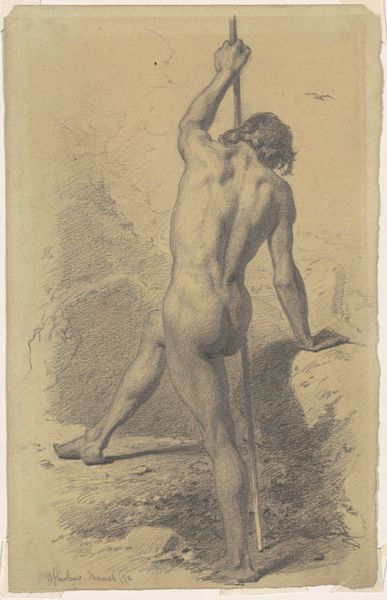
drawing, charcoal
#
drawing
#
baroque
#
charcoal drawing
#
charcoal
#
academic-art
#
charcoal
#
nude
Dimensions: 327 mm (height) x 407 mm (width) (bladmaal)
Curator: Heinrich Dittmers created this charcoal drawing, "Liggende mandlig model; studie til pietà?" sometime between 1625 and 1677. It’s currently held here at the SMK. What are your initial thoughts? Editor: He looks...exhausted. Utterly spent. There's a dramatic, theatrical quality to the pose, but the gray wash tones down any sense of real melodrama. More melancholic than tragic, wouldn't you say? Curator: I think you've nailed it. This study likely connects to a larger Baroque interest in conveying extreme emotion. Remember, the Pietà is all about the Virgin Mary cradling the dead body of Christ. That overwhelming sorrow is at the core. Editor: But he doesn't *feel* dead. Just…really tired. And look at the muscularity of the limbs; there's a vibrancy fighting to break through the languor. It's a strange tension – life versus the *idea* of death. Perhaps it captures the precise moment when breath leaves the body. That flicker between being here and being…not. Curator: Exactly. Dittmers expertly uses chiaroscuro, that strong contrast of light and dark, to enhance this dramatic tension. It draws the viewer’s eye, guiding it across the form and highlighting specific anatomical details. We can also consider its academic art influence as seen in its idealized form. Editor: Academic, yes, but also wonderfully human. See the slightly awkward positioning of the feet? The tension in the clasped hands? Those subtle imperfections lend authenticity. It feels like a very intimate and empathetic observation. And did they consider the color of the sheet as the backdrop of the entire work? It does help set a certain tone of reflection. Curator: Definitely. Its purpose wasn’t solely an end in itself. Drawing from life like this was considered essential academic preparation to demonstrate knowledge and expertise to produce credible narrative paintings on serious religious or mythological subjects. Editor: It really sparks an imaginative response, even now. It transcends its immediate function as preparation, becoming something more…a quiet meditation on mortality. Curator: I concur. Considering the social and religious conventions of that era, this is also a remarkable demonstration of the value placed upon art academies and skills obtained to then convey greater messages that moved individuals and society. Editor: So much captured in simple charcoal and paper. That is what stands out in this experience with this artwork!
Comments
No comments
Be the first to comment and join the conversation on the ultimate creative platform.
